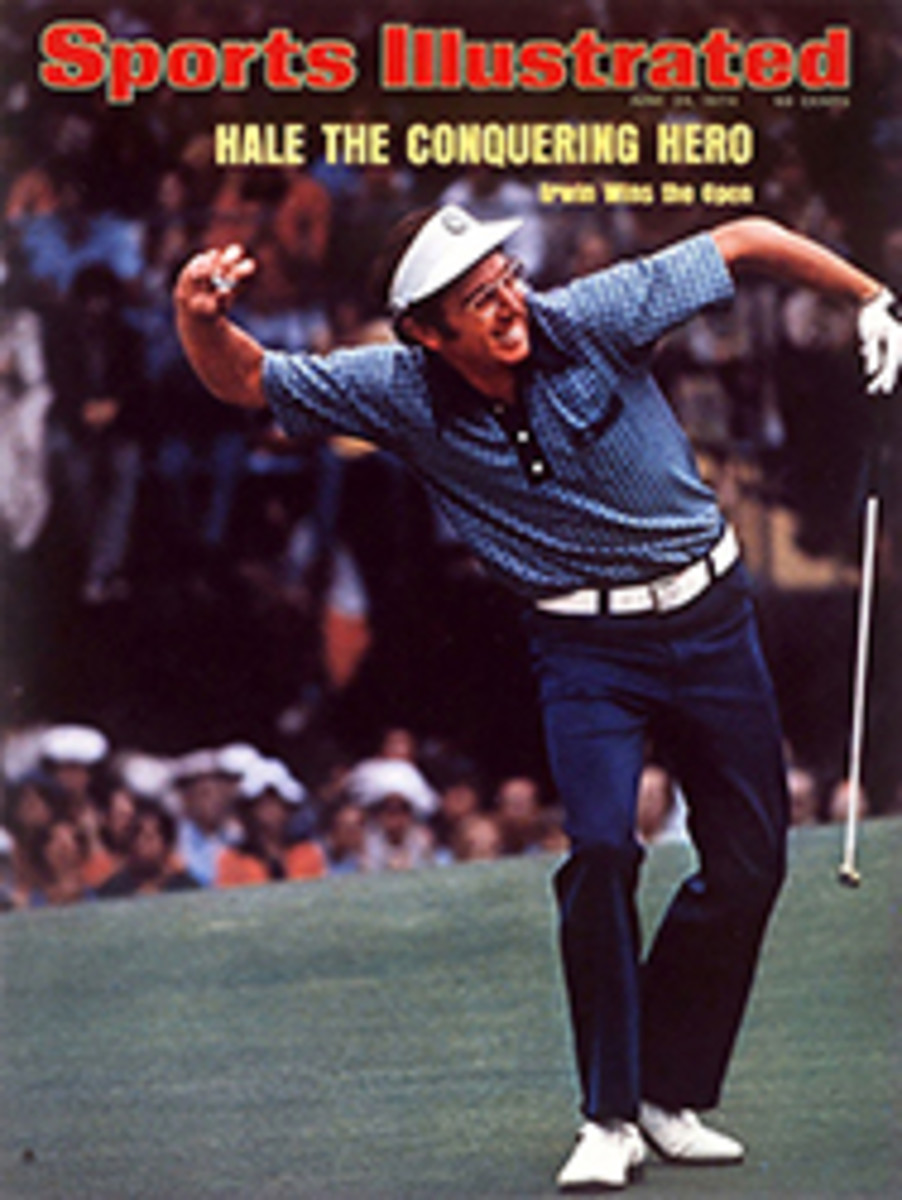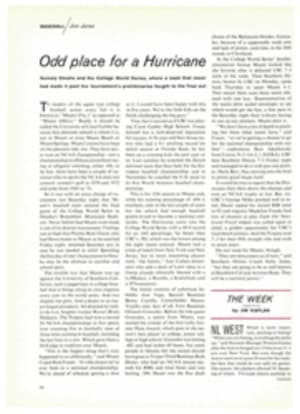
3,000 Miles from Tee to Green
Tournament purses for golf professionals grow larger every year, as does the number of people crying out each Sunday afternoon, "Can you imagine winning that much money just for playing golf for four days?" But a full year's take for a Nicklaus or Trevino hardly overshadows what J. Smith Ferebee picked up for four days in 1938.
J. Smith who? J. Smith Ferebee, that's who.
His friends called him Smitty. A stockbroker and an avid golfer, the 31-year-old Ferebee knew plenty of other good players around Chicago, but it was a duffer and friend, Fred (Fat Fred) Tuerk, who goaded him into the 1938 episode.
In July of that year Ferebee had played 72 holes in one day at the Olympia Fields Country Club, only to be kidded by Tuerk to the point where he announced that not only could he do it again, but he could play twice as many, between dawn and dusk, and come in under 95 for each round. On August 5 Smitty walked onto the Olympia Fields course at dawn of a day that turned out to include thunder, lightning and some strong head winds, and he walked off at dusk, 144 holes later, having played at an average of 85‚Öû strokes per 18.
And from there the thing escalated.
Playing eight complete rounds of golf in a single day was O.K., Tuerk allowed, but how about 144 holes a day for four straight days? The friends did not leave for posterity a complete account of the delicate negotiations that must have taken place between them while discussing such a proposition, but the result was the sort of bet that would make even a Lee Trevino pause.
Smitty was to play 600 holes of golf in four days. That worked out to 144 holes a day, plus another 24 somewhere along the way just to round out the number. But then came the real kicker. The rounds would have to be played in eight different cities from coast to coast.
The stakes? Tuerk's half of a plantation he and Ferebee owned together in Virginia, a property of monetary and immense sentimental value to Ferebee.
With all side bets settled as well, J. Smith Ferebee and entourage left Chicago for the West Coast to begin Smitty's ordeal. A plane was chartered and loaded with a number of Chicago cronies, plus the golfer's personal physician. And one other man, a hapless individual by the name of Artie Cashetta, who had drawn the unenviable assignment of serving as caddie for the marathon.
The first shot was fired on the 1st hole of the Lakeside Club in Los Angeles on Sunday, Sept. 25. Smitty did not tarry over his putts and speedily completed 84 holes. A sprint to the plane, a short flight to Phoenix and he started his afternoon rounds. Eighty-one holes later, as the sun set, he walked off the Encanta course.
Ferebee was off to a good start, having played eight rounds plus 21 of the 24 additional holes he needed; he had walked almost 50 miles of fairway and rough and earned a good night's sleep.
At dawn Monday he was on the 1st tee at Blue Hills in Kansas City. At lunch-time he was ahead by 72 more holes and one dog, a stray he had found on the course. Smitty promptly made the mutt an official member of the traveling party and the dog had a place of honor on the plane for the flight to St. Louis. A less pleasant aspect of the morning was that Smitty had pulled a tendon in his leg, and would limp the rest of the way.
St. Louis in '38 was the home of the Cardinals and the Browns, but for Ferebee it was merely the location of Norwood Hills where, with an aching leg and king-sized blisters, he holed out at dusk. Another 72 holes completed.
On Monday night he flew to Milwaukee, where the Tuckaway course awaited him. Somewhat revived on Tuesday morning, Smitty played 72 at Tuckaway and gutted out the three extra holes he still needed. Then a quick flight to Chicago and an afternoon spent racking up 72 more holes at his home course.
Wednesday morning was Philadelphia, North Hills Country Club. He raced through 72, and was coming down the stretch. Next stop, Long Island.
The plane landed at Mitchell Field at 1:30 p.m., and within 30 minutes Smitty was on the No. 4 course at the Salisbury Country Club. By this time, word of the mad golfer had traveled across the country and 500 well-wishers, or sadists, turned out for his final four rounds.
The bad leg was now taped from knee to ankle, and Ferebee's blisters were developing blisters of their own, but he forged on, shooting an 86 on his first round and following it with a 92.
Slowly, though. Very slowly. Disaster seemed to be approaching. More and more strokes, and more time between strokes, were needed as he struggled through the third round, and it was eight o'clock before the final round could be started. Most of Long Island was already dimming toward darkness, but the people from nearby Westbury weren't about to let the intrepid golfer fall short of the goal at this point. A fire truck was commandeered and driven onto the course, its searchlights illuminating fairway and green for each shot. Gallery members carried lights, and flares were fired so the flight of the ball could be traced and it could be marked when it came to rest.
Smitty went out in 53, but then, like a jaguar sensing the kill, he roared home in only 43 strokes, chipping within inches on the final hole to barely miss a birdie. At 10:30 he tapped in the short putt and the crowd let out a tremendous cheer. J. Smith Ferebee had won his bet.
But it was not only the winning of the bet that made Smitty's 1938 accomplishment remarkable. He had played 600 holes of golf in four days in eight cities from West Coast to East, and had not lost a ball, an achievement that, alone, should have endeared him to the high-handicappers of the world. He had walked more than 170 miles, no small feat in itself. It had cost almost $20,000 to finance the whole excursion, and it was rumored that more than $100,000 changed hands in side bets during the four days.
Impressive all that may be, but none of it says as much about J. Smith Ferebee and the game of golf as his final act. What did J. Smith Ferebee do after that last putt? The 600th hole behind him, the cheers still ringing in his ears, he took a short trip across Long Island to the World's Fair Grounds. And there, near midnight, still under lights, he played a hole of golf.

